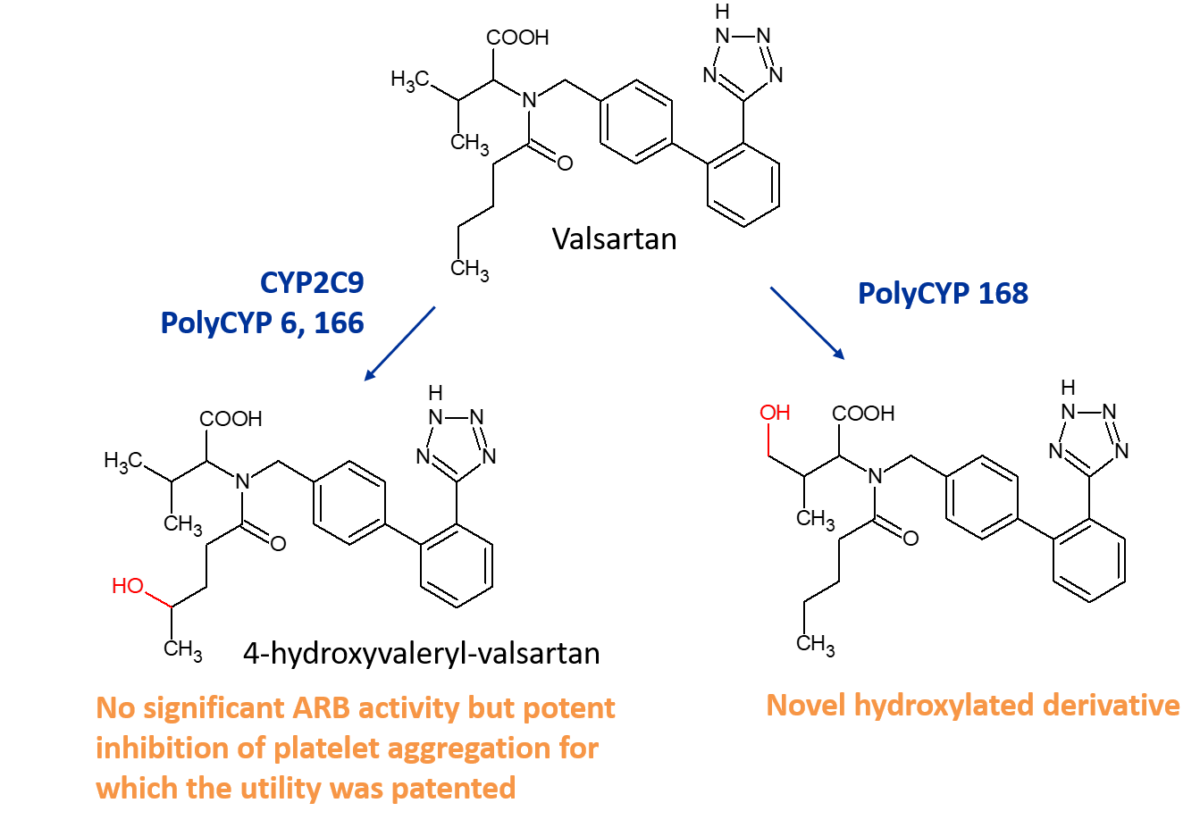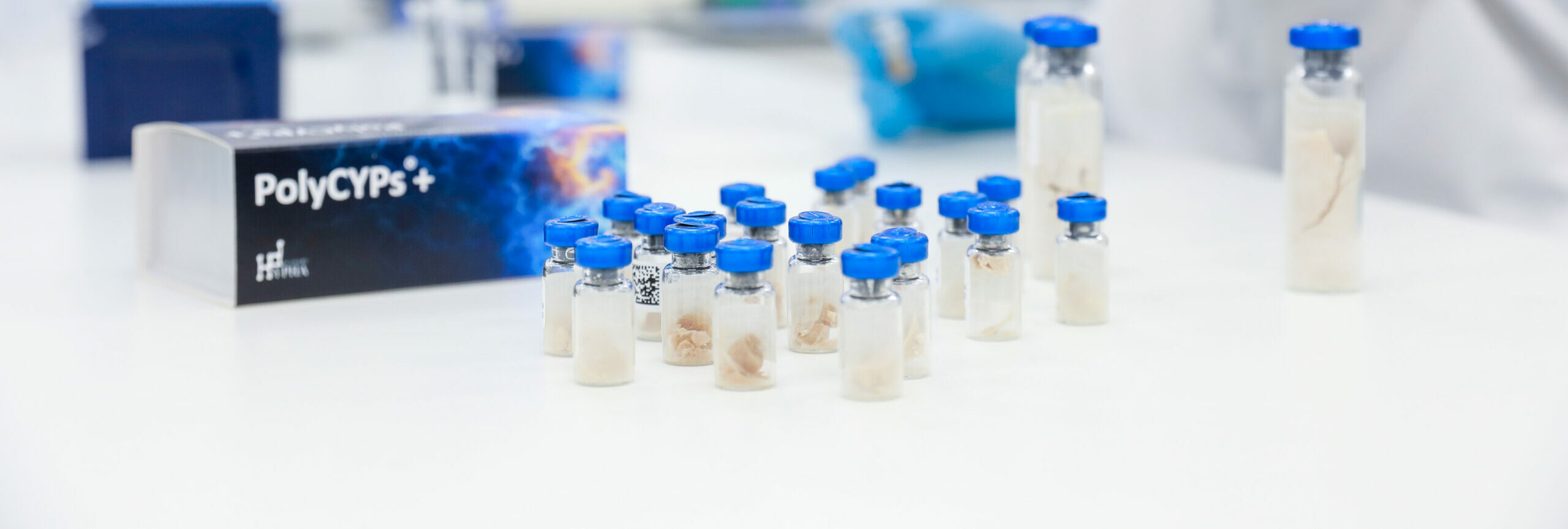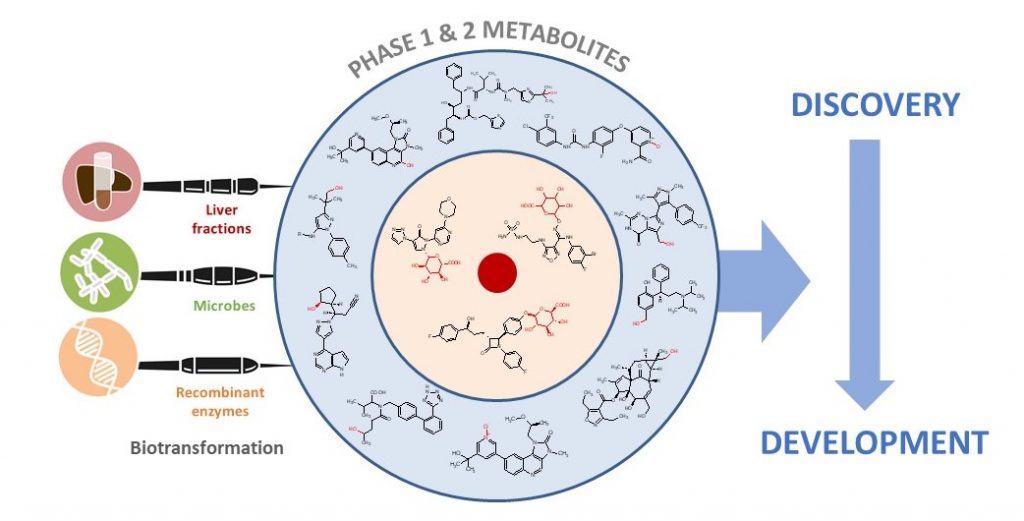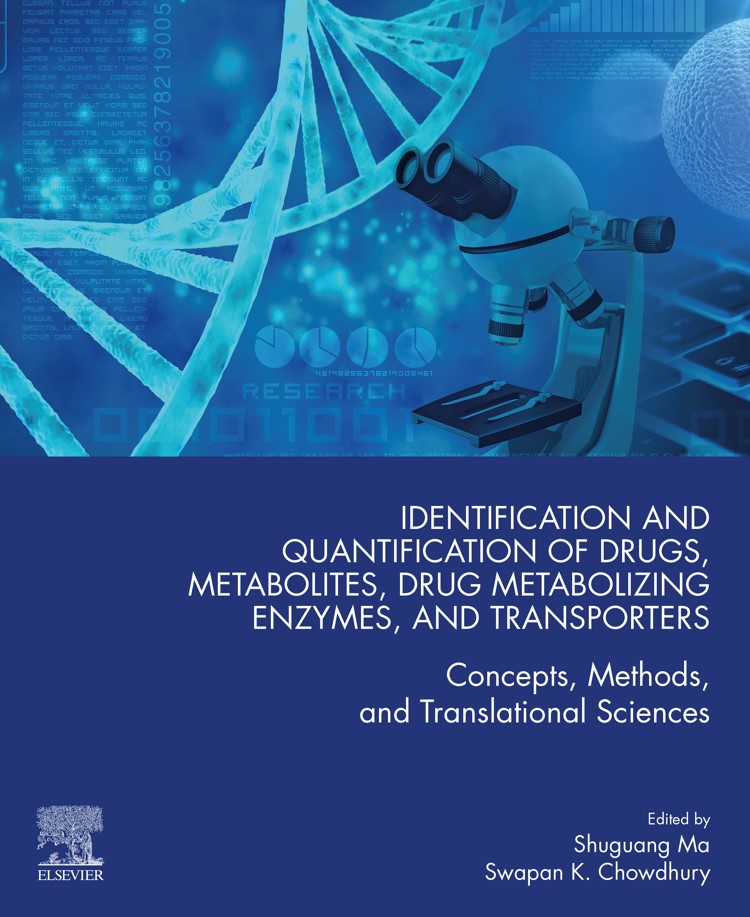Differential pharmacological activities of valsartan and its main human metabolite 4-hydroxyvaleryl-valsartan
Many metabolites of drugs are wholly or partly responsible for both on-target or off-target in vivo activity. Metabolites of some drugs may initially be considered pharmacologically inactive, yet further investigation yields surprising alternative effects via different mechanisms. Off-target effects might synergize with the on-target effects or have other beneficial outcomes which could enhance or broaden the indication of the drug.1
One interesting example is the angiotensin receptor blocker (ARB) drug valsartan, used to treat a variety of cardiac conditions including hypertension. Valsartan is minimally metabolized by CYP2C9 in human liver microsomes with one main metabolite detected, 4-hydroxyvaleryl-valsartan, which accounts for 9% of the circulating dose2. This metabolite was found to have no significant ARB activity, however further investigation revealed unexpected potent inhibition of platelet aggregation3. This is significant given platelet aggregation plays a key role in the pathogenesis of coronary and cerebrovascular occlusions. The finding was considered of sufficient impact for Novartis to patent use of 4-hydroxyvaleryl-valsartan for treatment of coronary disease mediated by platelet aggregation (WO2003094915A1).

Screening of valsartan against 12 strains from Hypha’s biotransformation panel, identified sp145 as the best actinomycete for scale-up. A total of 12.1mg of >95% pure 4- hydroxyvaleryl-valsartan was obtained from a 2L fermentation incubated with 200mg of valsartan. In addition, an unreported novel hydroxylated metabolite was purified and identified from this fermentation. Both these metabolites could also be produced by PolyCYPs enzymes.
IP protection
Route to uncover and scale-up metabolites with patentable unexpected activities
Access to novel derivatives
Opportunity for capturing and testing novel hydroxylated metabolites which may have more desirable properties than the parent compound.
References
1. Urban et al., 2012. Screening for safety-relevant off-target activities. In Polypharmacology in Drug Discovery. Ed. Jens-Uwe Peters.
2. Nakashima et al., 2005. Xenobiotica 35 (6), 589-602.
3. Serebruany et al., 2004. J. Cardiovasc Pharmacol. 43 (5), 677-684.
Related Resources
Introducing oxygen into a drug candidate late in the optimisation process has several applications including exploration of SAR (structure-activity relationships) and the ability to access derivatives that may possess superior properties such as improved metabolic stability and LLE (ligand-lipophilicity efficiency). Biocatalysis can provide access to chemical space in a complementary manner to chemical synthesis and provide a “one-experiment” solution to accessing multiple derivatives in parallel. This poster illustrates the application of a new biocatalysis kit, PolyCYPs®, to enable parallel synthesis of hydroxylated derivatives of drugs.
In this paper, authors from Hypha and Incyte Corporation discuss the impact and application of biotransformation of drugs by mammalian systems, microorganisms, and recombinant enzymes, covering active and reactive metabolites, the impact of the gut microbiome on metabolism, and how insights gained from biotransformation studies can influence drug design.
In Chapter 4 of the book on “Identification and quantification of drugs, metabolites, drug metabolizing enzymes and transporters”, Hypha authors summarise the different methods employed for producing metabolites of drugs, illustrated with representative examples from the literature and work undertaken at Hypha. The chapter also includes a discussion and examples of the use of NMR spectroscopy for structure elucidation of metabolites.


